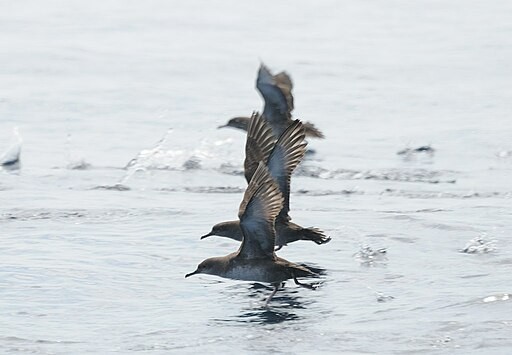The response of individual animals to climate change determines whether populations will persist or go extinct. Many species shift their ranges as our planet gets warmer, but until now, the mechanisms underlying this remain unclear.
This behavior is displayed by Europe's most endangered seabird, Balearic shearwater. This animal shifts its migratory patterns to more hospitable climates, providing a unique perspective on climate change.

Critically Endangered Seabird
Balearic shearwater (Puffinus mauretanicus) is a small, stiff-winged seabird that belongs to the Procellariidae family. It is one of the most threatened groups of birds on the planet, as it faces potential extinction as a species. This includes land-based threats, like predation and habitat degradation, and at-sea threats, like pollution and overfishing. They are long-lived but are critically endangered mainly due to declines driven by fisheries bycatch since they can get caught on baited longline hooks and gill nets.
Since 2010, experts from Oxford University's Biology Department and the University of Liverpool have been tracking Balearic shearwaters using miniature on-board geolocation devices. These birds breed in remote corners of the Balearic Islands, then migrate to the Atlantic coasts of France, Spain, and the UK to spend the summer months. The monitoring revealed that the birds have been migrating north once they leave the Mediterranean region.
However, it was unknown whether this change was being driven by individual birds, which alter their behavior, or through natural selection that favors birds that travel further.
READ ALSO: Migration Pattern of Birds Are Getting Disrupted By Climate Change on a Continental Scale
Unveiling the Shift in Migratory Pattern
A study led by biologists from the University of Oxford found that individual behavioral flexibility, not evolutionary selection, drives the bird's rapid migratory range shift. The research is described in the paper "Climate change drives migratory range shift via individual plasticity in shearwaters."
The researchers compared the migration patterns of the same individual birds tagged in multiple years. It was discovered that individual Balearic shearwaters shift their range northwards by an average of 15.5 miles (25 kilometers) per year.
According to research co-author Joe Wynn, the average sea surface temperature in the summering grounds serves as the best predictor of this change in migratory behavior. This suggests that the birds may be following changes in underlying marine resources. The researchers noted that this flexibility demonstrated by individuals in the face of rapid climate change is encouraging. Aside from direct threats to land and sea, the increasing threat of climate change poses a challenge for a species brewing in restricted habitats.
Despite this flexibility in their summer destination. Balearic shearwaters are more constrained in their breeding areas, so migrating further north means they must fly back in the autumn. It was also found that the route taken by individual birds on previous migratory journeys is a better predictor of return speed than an estimate of the straight line distance back to the colony. This means that these birds do not depend on a large-scale navigation map during migration but instead have a memory of the route they took in the past.
The result of this study suggests that individual flexibility can help with distribution shifts driven by climate change outside the breeding season. The research findings can also inspire conservation strategies for vulnerable migratory bird species.
RELATED ARTICLE: Bird Migration: How Do Birds Find Their Way?
Check out more news and information on Bird Migration in Science Times.














